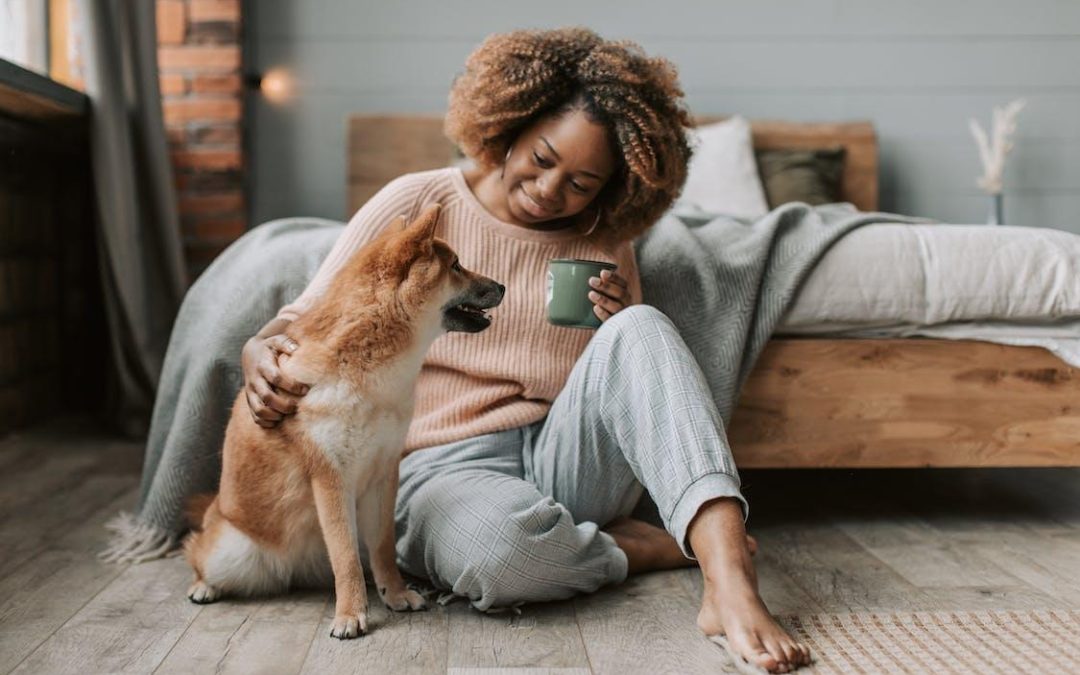Welcoming a fearful dog into your life can be a rewarding experience, but it also requires a compassionate and patient approach. At Belltown Dog Walker, we understand the challenges that come with working with a fearful dog. This guide will provide valuable insights and expert tips on handling and caring for your timid companion, helping them feel secure, build confidence, and thrive.
1. Create a Safe Haven
A fearful dog needs a designated safe haven where they can retreat and feel secure. Set up a cozy space with their bed, blankets, and toys, and make sure it is in a quiet area of your home. Consider using a crate or a playpen to provide a den-like environment that gives them a sense of security.
2. Respect Boundaries and Personal Space
Respecting your dog’s boundaries is essential. Avoid pushing them into uncomfortable situations or forcing interactions. Allow them to approach new people, animals, or environments at their own pace. This respectful approach will foster trust and help them feel more comfortable in their surroundings.
3. Positive Reinforcement Training
Positive reinforcement is a powerful tool for training fearful dogs. Use treats, praise, and gentle petting to reward your dog for calm and confident behavior. Focus on their small victories and progress, reinforcing positive associations with things that previously triggered fear. Celebrate their courage and offer rewards to build their confidence over time.
4. Gradual Exposure to Triggers
Gradual exposure to triggers is key to helping your fearful dog overcome their fears. Identify their specific triggers, such as loud noises or unfamiliar environments, and expose them to these stimuli in a controlled and gradual manner. Start with minimal exposure and gradually increase the intensity or duration as they become more comfortable. For example, if your dog is fearful of strangers, start by having a trusted friend visit and reward your dog with treats for calm behavior, then gradually introduce more visitors over time.
5. Counter-Conditioning Techniques
Counter-conditioning involves pairing the presence of a feared stimulus with something positive to change your dog’s emotional response. For example, if your dog fears thunderstorms, play calming music and offer treats during a simulated storm. This helps your dog associate the previously feared stimulus with positive experiences, gradually reducing their fear response.
6. Maintain Consistency and Predictability
Fearful dogs thrive in environments with consistent routines and predictable patterns. Establish a regular feeding schedule, exercise routine, and designated times for walks and play. Consistency and predictability create a sense of security and stability, helping your dog feel more at ease.
7. Enrichment and Mental Stimulation
Engage your fearful dog in activities that provide mental stimulation and enrichment. Puzzle toys, interactive games, and scent work can help redirect their focus and build confidence. Mental stimulation not only helps alleviate anxiety but also strengthens the bond between you and your dog.
8. Exercise and Physical Activity
Regular exercise is crucial for a dog’s overall well-being, including fearful dogs. Engage them in daily walks, play sessions, or low-impact activities suitable for their comfort level. Physical activity releases endorphins, reduces stress, and promotes relaxation, contributing to your dog’s emotional well-being.
9. Seek Professional Assistance
If your dog’s fearfulness persists or intensifies despite your best efforts, it may be beneficial to seek professional help. Consult with a certified dog trainer or behaviorist who specializes in working with fearful dogs. They can assess your dog’s specific needs, develop a customized training plan, and provide expert guidance and support throughout the process.
10. Patience, Empathy, and Consistent Support
Patience, empathy, and consistent support are vital when working with a fearful dog. Understand that progress may be slow, and setbacks may occur. Avoid scolding or punishing your dog for fearful reactions, as this can reinforce their anxiety. Instead, offer reassurance, understanding, and gentle guidance. Celebrate even the smallest steps forward and be a consistent source of comfort and support for your fearful companion.
Belltown Dog Walker: A Gentle Hand for Fearful Dogs
Working with a fearful dog requires dedication, understanding, and a commitment to their well-being. By creating a safe and comforting environment and offering patience, empathy, and unwavering support, you can help your fearful dog thrive.
If you need additional guidance or support in handling and caring for your fearful dog, don’t hesitate to contact Belltown Dog Walker. Our experienced team specializes in providing compassionate pet care services and can assist you in creating a tailored plan to meet your dog’s specific needs.
Together, we can help your fearful dog navigate their fears and live a happier life. Let us be your trusted partner in providing the care and attention your beloved pet deserves.

